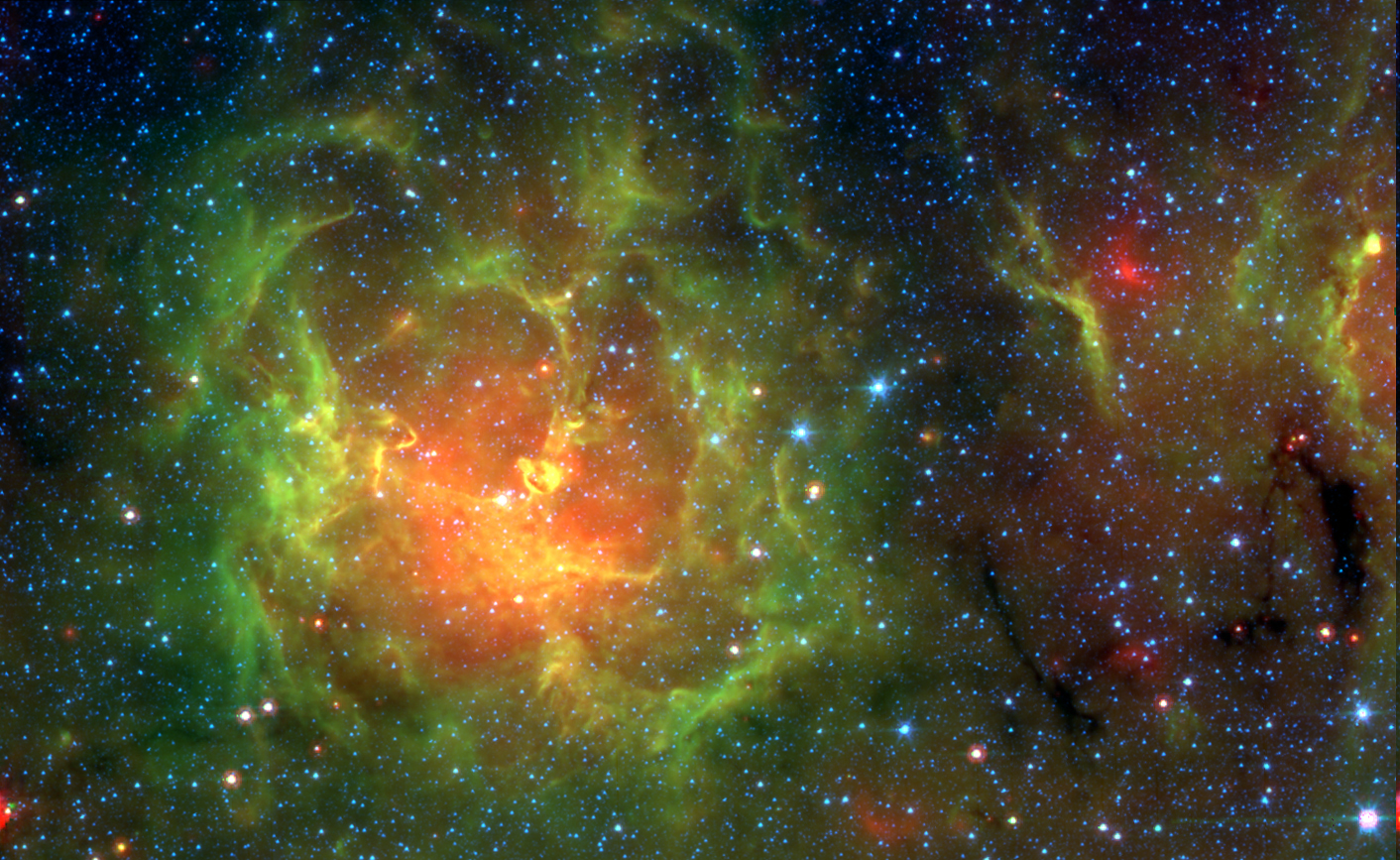2020 February 13
Spitzer’s Trifid
Image Credit: J. Rho (SSC/Caltech), JPL-Caltech, NASA
Explanation: The Trifid Nebula, also known as Messier 20, is easy to find with a small telescope. About 30 light-years across and 5,500 light-years distant it’s a popular stop for cosmic tourists in the nebula rich constellation Sagittarius. As its name suggests, visible light pictures show the nebula divided into three parts by dark, obscuring dust lanes. But this penetrating infrared image reveals the Trifid’s filaments of glowing dust clouds and newborn stars. The spectacular false-color view is courtesy of the Spitzer Space Telescope. Astronomers have used the infrared image data to count newborn and embryonic stars which otherwise can lie hidden in the natal dust and gas clouds of this intriguing stellar nursery. Launched in 2003, Spitzer explored the infrared Universe from an Earth-trailing solar orbit until its science operations were brought to a close earlier this year, on January 30.
斯皮策望远镜的三叶星云
影像提供: J. Rho ( SSC/Caltech ), JPL-Caltech , NASA
说明: 亦名为M20的美丽三叶星云,是一个小望远镜即见的天体。位在星云密布的人马座之内,跨幅约30光年、距离约5,500光年远的三叶星云,是观星者巡天的热门标的之一。就如其名称所示,在可见光影像里,这团星云被黝黑的尘埃带分割成三片。不过,这幅高穿透力的红外光影像,清楚呈现了三叶星云丝缕状的明亮尘埃云和新诞生恒星。这张精采的假色影像,是由斯皮策空间望远镜所拍摄。对这个非常有趣的恒星诞生区,天文学家用红外光影像数据,去数其中通常包裹在胎衣尘埃和气体云里的新诞生和胚胎期恒星。在2003年发射的斯皮策望远镜,一直从尾随地球的绕日轨道上,透过红外光探索宇宙。不过它的科学观测操作,在今年的1月30日正式结束。








Amazing!